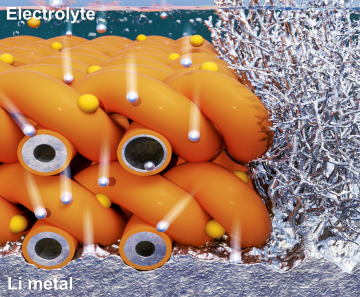KAIST
BREAKTHROUGHS
Research Webzine of the KAIST College of Engineering since 2014
Spring 2025 Vol. 24Synergizing optical imaging and machine learning to diagnose coronary artery disease accurately
Synergizing optical imaging and machine learning to diagnose coronary artery disease accurately
Dual-modal optical imaging and machine learning are combined to diagnose coronary artery disease accurately via a comprehensive assessment of high-risk coronary plaque without labels. Valuable images lend insight into coronary artery disease as a promising diagnostic method toward cardiovascular therapeutics.
Article | Spring 2022
Prof. Hongki Yoo and Dr. Hyeong Soo Nam, from the Department of Mechanical Engineering, successfully developed a label-free, comprehensive intravascular imaging catheter and undertook the simultaneous microstructural and biochemical assessment of high-risk coronary plaque in vivo for a precise diagnosis of coronary artery disease. This study, in collaboration with Prof. Sunwon Kim at Korea University Ansan Hospital and Prof. Jin Won Kim at Korea University Guro Hospital, was published in JACC-Basic to Translational Science (IF 8.648) under the title “Comprehensive Assessment of High-Risk Plaques by Dual-Modal Imaging Catheter in Coronary Artery” (volume 6, issue 12, pages 948-960) in December of 2021.
It has been demonstrated that a lipid-rich, inflamed core and a thin overlying cap are hallmarks of high-risk plaque. Multimodal molecular imaging approaches are expected to allow better risk assessments, as they enable detailed interrogation of the plaque composition and molecular activity. However, current multimodal molecular imaging methods have limited clinical applicability as they inherently require exogenous imaging agents and thus involve potential toxicity risks.
Recently, a research team led by Prof. Hongki Yoo in the Department of Mechanical Engineering at KAIST and Prof. Jin Won Kim of the Cardiovascular Center at Korea University Guro Hospital developed a fully integrated optical coherence tomography-fluorescence lifetime imaging (OCT-FLIm) system and a low-profile dual-modal imaging catheter to provide both clinical-grade OCT images and co-registered compositional FLIm information (Figure 1). This combined imaging system allows rapid image acquisition (100 RPS, 20 mm/s pullback) and multispectral FLIm measurements of the biochemical features of coronary arteries in a label-free manner, unlike other multimodal imaging modalities. The capability of OCT-FLIm to characterize high-risk coronary plaque features was demonstrated for the first time in beating swine hearts. By incorporating a machine-learning framework trained based on rigorous histological validations, multiple key components associated with plaque destabilization, including lipids and macrophages, can be automatically and quantitatively characterized in combined OCT-FLIm images (Figure 2). An assessment of these key biochemical components offers quantitative measures for stratifying individual plaque risks in living patients and will thus provide new opportunities for optimal treatments. “This technique is a promising diagnostic method in the upcoming era of cardiovascular therapeutics, providing valuable image-based insight into the complex interplay between lipids and atherogenic immune responses,” said Prof. Hongki Yoo. In addition to these advantages of this technology, OCT-FLIm has great potential for clinical applications, with the first in-human clinical trials scheduled to begin in the near future.
This research work was supported by a grant from the Samsung Research Funding Center of Samsung Electronics (SRFC-IT1501-51). More information can be found at the following link: https://www.sciencedirect.com/science/article/pii/S2452302X21003119.
Most Popular

When and why do graph neural networks become powerful?
Read more
Extending the lifespan of next-generation lithium metal batteries with water
Read more
Professor Ki-Uk Kyung’s research team develops soft shape-morphing actuator capable of rapid 3D transformations
Read more
Smart Warnings: LLM-enabled personalized driver assistance
Read more
Development of a nanoparticle supercrystal fabrication method using linker-mediated covalent bonding reactions
Read more

